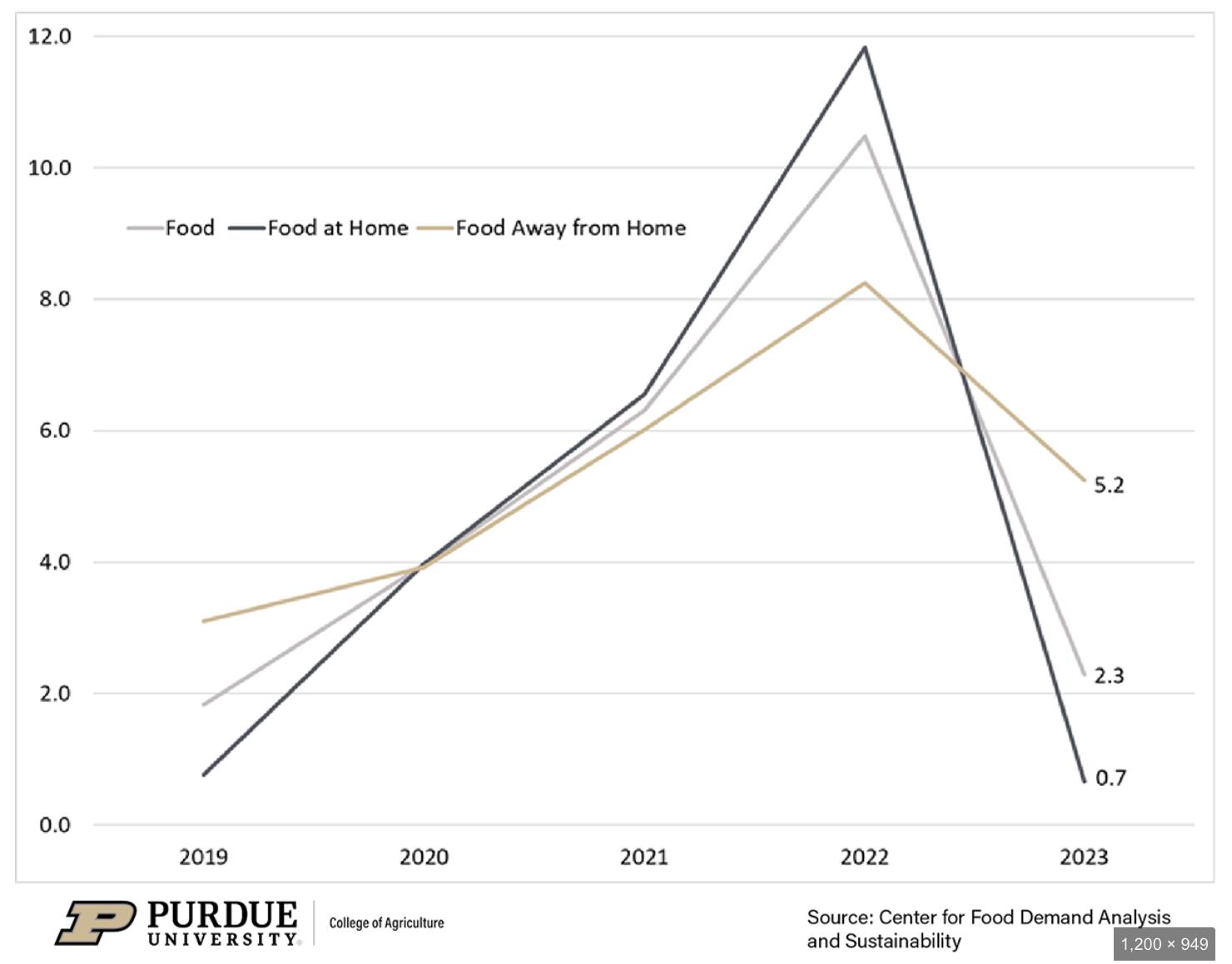 Dr. Leo Feler, Chief Economist at Numerator, recently published on prices of groceries and their affordability. During January 2020, that marked the beginning of the COVID years, through December 2023, the cost of at-home food rose by an average of 25 percent. Income, however, increased 24 percent over the same period, offsetting the average rise in shelf prices.
Dr. Leo Feler, Chief Economist at Numerator, recently published on prices of groceries and their affordability. During January 2020, that marked the beginning of the COVID years, through December 2023, the cost of at-home food rose by an average of 25 percent. Income, however, increased 24 percent over the same period, offsetting the average rise in shelf prices.
Dr. Feler documented an increase in price for food categories over the four-year period with poultry, fish and eggs increasing at 26 percent and the lowest category, dairy and related products, at 21 percent. His predictions are for stability in price going forward with low, single-digit increases paralleling the situation before COVID that resulted in difficulties in the supply chain.

Despite the economic reality that grocery items are as affordable now as they were in 2020, there is a perception that prices are higher. This is evidenced by recent comments from the White House relating to “price gouging” and “shrinkflation” and echoed in statements by the Federal Trade Commission.
Consumers have adapted to higher prices by searching for value, hence, the rise in popularity of house brands. Surveys showed that forty percent of consumers are buying more private brands and reducing expenditure on unnecessary food items. They are also buying in bulk as reflected in the reported revenue of Costco, Sam’s Club and B.J.’s. Consumers are also calculating cost per unit and splitting their grocery purchases among competing stores to take advantage of special offers.
According to Steve Markenson, Vice-President of Research at the Food Marketing Institute, consumers are now considering convenience and quality in addition to cost in evaluating items. The deep discounters, led by Aldi, have obviously benefited through low operating costs, limited range of SKUs and demonstrably lower prices based on their private ownership and business model.

It is evident that retailers that can negotiate favorable prices from their suppliers contributes to higher gross margins and improvement in the bottom line. This only benefits consumers if there is a pass-through of savings. The check-out point and the print-out of the transaction either reinforces or dispels the perception of value.

Dr. Leo Feler, Chief Economist, Numerator Inc. |
Given the increase in eat-at-home, and with increased concern over the price of groceries, promotion of eggs should emphasize value. This includes an emphasis on nutrient content against alternatives including dairy, red meat and plant-based alternatives. Since the expanded concept of value incorporates convenience and ease of preparation, the American Egg Board should address the inherent attributes of eggs and develop a “not just for breakfast” message. Food manufacturers should be encouraged to incorporate egg-derived products in foods and develop a range of snacks and meal presentations featuring eggs as a source of high-quality protein with limited caloric contribution to diets.